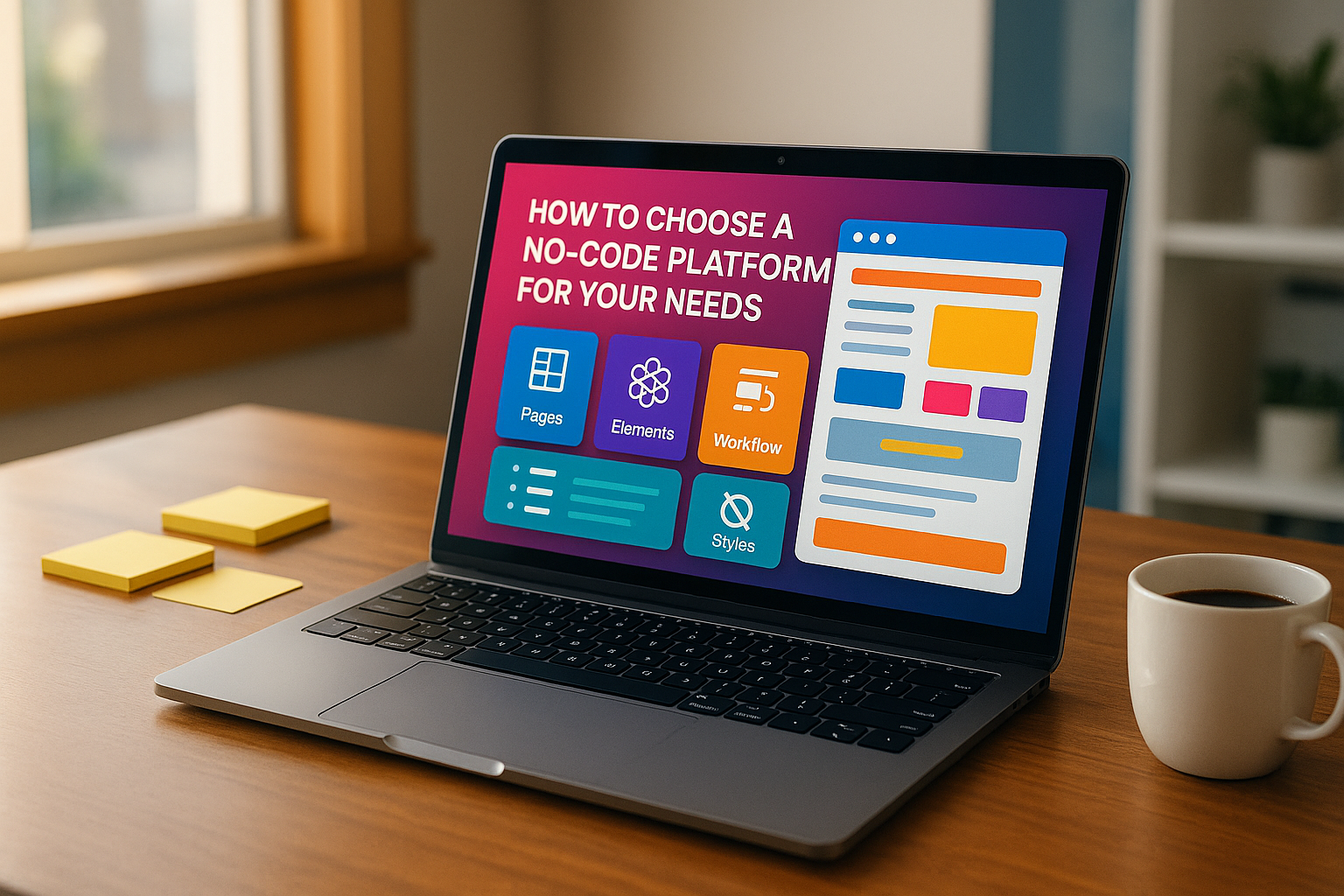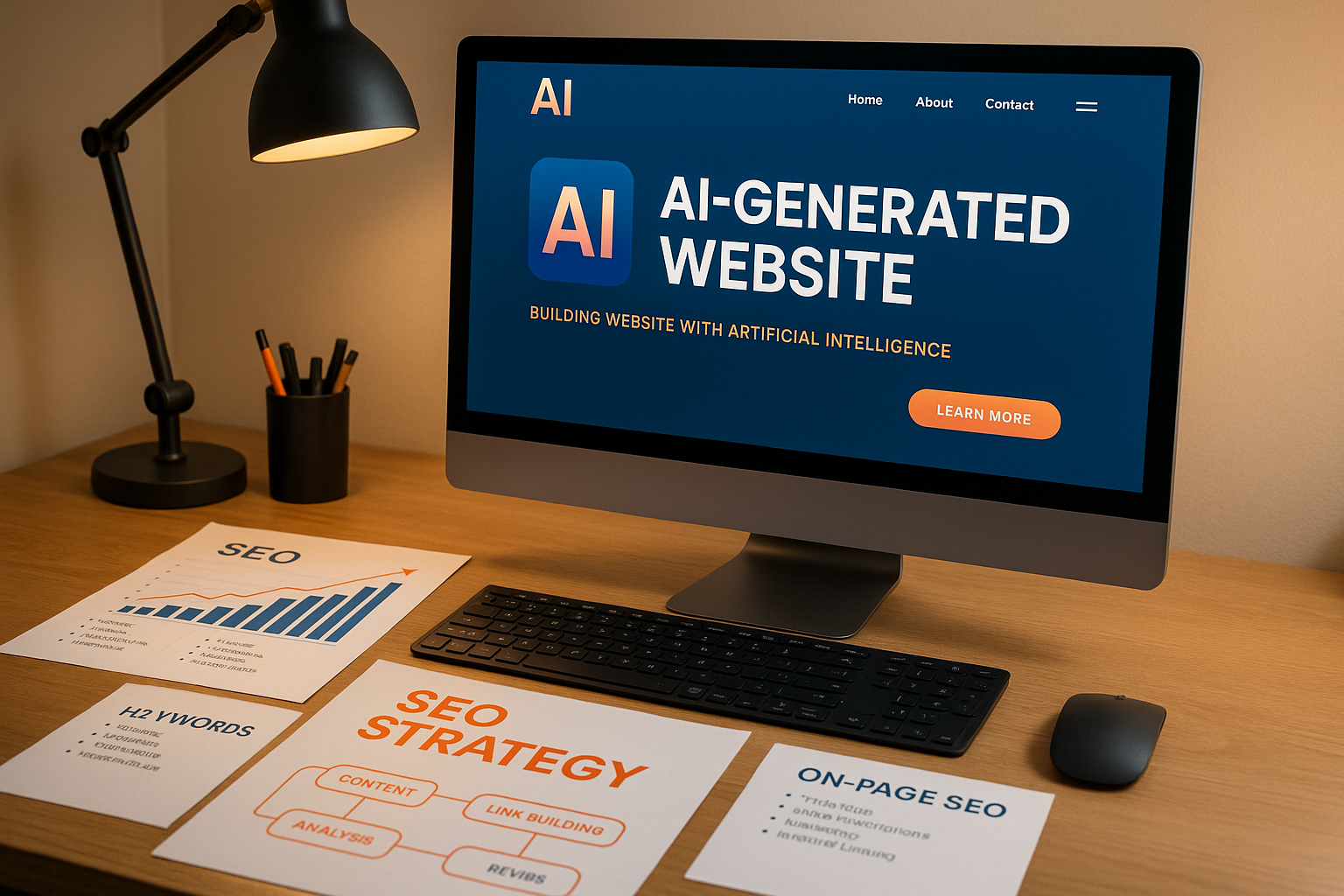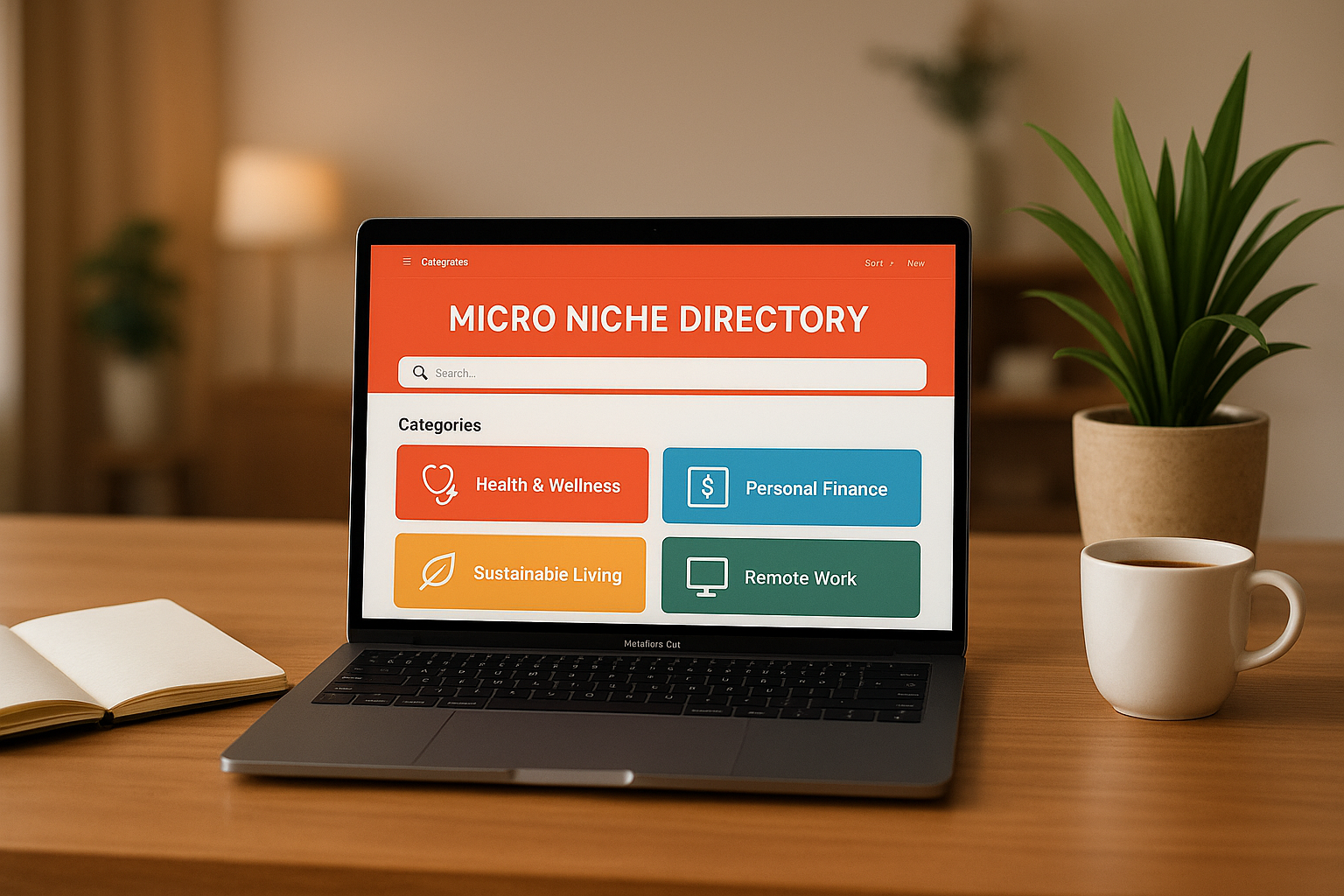How To Choose a No-Code Platform for Your Needs

Choosing the right no-code platform can save time, money, and effort while helping you build websites or apps without coding. Here’s a quick summary of what to focus on:
- Define Your Goals: Know your project type (blog, directory, membership site) and the features you need, like payment processing or analytics.
- Understand Your Audience: Identify user needs, device preferences, and features to improve their experience.
- Plan for Growth: Choose a platform that can handle increasing traffic, storage, and team roles.
- Evaluate Features: Look for drag-and-drop editors, templates, SEO tools, and integrations.
- Set Your Budget: Platforms range from free to $249/month, with add-ons for extra traffic or collaborators.
- Check Technical Needs: Ensure the platform supports custom CSS, API integrations, and scalability.
Key Tip: Start with a platform that meets your current needs but has room to grow, avoiding costly migrations later.
| Plan | Cost | Best For | Key Features |
|---|---|---|---|
| Free | $0 | Testing & learning | Basic templates, 5,000 visits/month |
| Starter | $39/month | Small businesses | Custom domain, monetization tools |
| Pro | $89/month | Growing companies | Advanced features, 250,000 visits |
| Agency | $249/month | Large organizations | Unlimited features, 1M visits/month |
Choose wisely to ensure your platform grows with your project!
How to Choose a No Code Platform (2024 Update)
Set Your Project Goals
Before choosing a platform, it’s essential to know exactly what you want to accomplish. Clear goals will help you identify the features and tools you need to bring your project to life.
Define Your Project Type
Determine your website’s main purpose. Is it a blog to share insights, a directory to connect users, or a membership site offering exclusive content?
If your project involves generating revenue, you may need features like:
- Payment processing
- Subscription management
- Content restrictions for premium access
- User membership tiers
- Analytics tools to track performance
Understand Your Users’ Needs
Knowing your audience is key to identifying essential features. Consider these questions:
- What problems will your website solve for users?
- How will they interact with your site?
- What devices will they use to access it?
- What features could improve their experience?
For example, if you’re creating a professional directory, users might need advanced search options, customizable profiles, and messaging tools. If you’re catering to content creators, they may require strong media handling and formatting capabilities.
Plan for Growth
Think ahead to avoid platform constraints as your project expands. Here are some factors to keep in mind:
- Traffic capacity: Estimate your monthly visitors and prepare for spikes, such as 50,000+ visits. Choose a platform that scales cost-effectively.
- Content storage: Assess your needs for pages and media storage to ensure the platform can handle your content volume.
- Team roles: Plan for team growth by selecting a platform that allows different access levels for contributors, editors, and administrators.
Switching platforms later can be time-consuming and expensive. To avoid this, pick one that can scale with your project and offers straightforward upgrades with transparent pricing.
Check Platform Features
Once you’ve outlined your project goals, the next step is to examine the features of a no-code platform that can bring your vision to life. These features play a crucial role in determining your project’s success. Platforms like Lideroo offer a range of tools to simplify everything from design to monetization. Here’s a closer look at the design, content, and monetization tools that can help your project succeed.
User Interface and Design Options
A well-designed interface can make development easier and ensure your site looks professional while staying true to your brand identity.
- Visual editor: Drag-and-drop tools allow you to create pages without coding, making the process faster and easier to learn.
- Template selection: Pre-designed templates save time and ensure your site looks polished. Choose templates that align with your project type, whether you’re building a blog, directory, or membership site.
- Customization options: Look for platforms that let you make detailed changes, such as custom CSS, to fully match your brand’s look and feel.
It’s also important to test the platform’s responsiveness. Your site should look and function well on all devices, from desktops to smartphones.
Core Tools and Add-ons
Select features that directly align with your project’s needs:
- Content management: Platforms with AI-powered tools can simplify content creation and help maintain a consistent tone and style.
- SEO tools: Built-in SEO features can improve your site’s visibility in search engines. Look for:
- Customizable meta tags
- Automatic XML sitemap generation
- Support for schema markup
- Integrations: Ensure the platform works with tools you already use, like email marketing services or analytics software.
Scalability is key as your traffic grows. Platforms like Lideroo offer scalable add-ons to handle increased visitor numbers and evolving site needs.
Revenue Generation Tools
| Feature Type | What to Look For |
|---|---|
| Payment Processing | Support for multiple payment gateways |
| Content Restrictions | Tools for creating member-only content |
| Subscription Management | Recurring billing and trial period options |
Monetization tools often come at a cost. Basic plans with these features typically start at $39 per month, while more advanced options range from $89 to $249 per month. Keep in mind that free plans usually lack revenue tools, so factor these costs into your budget.
Set Your Budget
Planning your budget ensures your project aligns with your goals and the features you need. A well-thought-out budget helps you avoid surprises and keeps essential elements in place.
Calculate Your Spending Limit
Figure out how much you can afford to spend each month based on your revenue or available resources. Keep both short-term needs and long-term growth in mind:
- If your site generates revenue, set aside a portion of your monthly earnings.
- For personal projects, establish a monthly cap and think about the return on investment for business websites.
Once you know your limit, compare available plans to find one that fits your budget.
Review Price Plans
Take a look at subscription options to choose the one that offers the best value for your needs. For example, Lideroo provides four different plans with varying features:
| Plan | Cost | Key Features | Best For |
|---|---|---|---|
| Free | $0 | Basic templates, 5,000 visits/month | Testing and learning |
| Starter | $39 | Custom domain, monetization tools, 50,000 visits/month | Small businesses |
| Pro | $89 | Advanced features, 250,000 visits/month | Growing companies |
| Agency | $249 | Unlimited features, 1M visits/month | Large organizations |
For membership-based sites, plans between $39 and $89 per month often include the monetization tools you’ll need.
Include Extra Expenses
Don’t forget to factor in additional costs beyond the base subscription:
- Extra 100,000 visits: $5/month
- Extra 500,000 visits: $20/month
- Extra 1M visits: $35/month
- Additional collaborators: $2/month per person
It’s a good idea to start with a plan that slightly exceeds your current needs. This can help you avoid frequent upgrades, which might end up costing more. Investing in the right features upfront can also save you from expensive migrations or customizations down the road.
Review Technical Needs
Your platform should not only align with your project goals and budget but also meet technical demands. Understanding these requirements ensures the platform can handle your needs today and scale with you in the future. Here’s a breakdown of the key technical aspects to consider.
List Technical Requirements
Start by identifying your technical needs:
- Determine if you require custom CSS or JavaScript for advanced design or functionality.
- Assess whether integration with external services (like APIs) is necessary.
- Estimate storage requirements for media and other content.
- Outline security protocols and compliance standards you must follow.
- List any third-party tools or software your platform should connect with.
For example, Lideroo’s Agency plan supports custom CSS and API integrations, making it suitable for projects that demand advanced customization.
Check Growth Capacity
Scalability is critical for long-term success. Evaluate how well the platform can grow with your needs:
| Growth Factor | Starting Needs | Future Expansion |
|---|---|---|
| Monthly Visits | 5,000 - 50,000 | Up to 1M+ |
| Storage Space | Initial requirements | Expanded capacity |
| Features | Core functionality | Advanced tools |
| Integration Points | Basic connections | Multiple touchpoints |
Choose platforms that offer flexible upgrade options. For instance, Lideroo’s scalable infrastructure allows you to increase capacity as needed, such as adding 100,000 visits for $5/month or 500,000 visits for $20/month.
Team Access and Workflows
A platform should also support efficient team collaboration. Look for features like:
- Role-based access controls and automated workflow approvals.
- Built-in tools for team communication and feedback.
- Version tracking to monitor changes and maintain content history.
For example, Lideroo’s Pro plan includes 10 collaborator seats with role-based permissions and custom workflows. You can add more team members for $2/month per person, making it easy to scale your team as your project grows.
Conclusion
Choosing the right no-code platform starts with understanding your project goals and evaluating key factors like features, budget, and technical requirements. These elements form a solid foundation for making an informed decision.
For example, some platforms can handle traffic ranging from a few thousand visits to over a million, making them a good fit for projects that aim to grow over time.
Lideroo stands out with its scalable infrastructure, straightforward pricing options, and ability to adapt to your project’s evolving needs. This flexibility ensures the platform can grow alongside your ambitions.
Pick a platform that meets your current needs while offering the capacity to grow with you in the future.
FAQs
How can I choose the right no-code platform for building a membership site with monetization features?
To select the right no-code platform for a membership site with monetization features, focus on platforms that offer built-in monetization tools like premium content options and subscription plans. Ensure the platform includes user management capabilities, such as role-based access and custom permissions, to effectively manage your members and their access levels.
Additionally, prioritize platforms with SEO optimization to help your site reach a wider audience and improve visibility in search results. By aligning these features with your specific goals and budget, you’ll be well-equipped to build a successful membership site.
What are the long-term costs of using a no-code platform, and how can I plan for future growth?
When considering a no-code platform, it’s essential to account for potential long-term costs. These can include subscription fees, added costs for premium features, scalability charges as your website grows, or fees for third-party integrations. Budgeting for future growth involves anticipating these expenses and ensuring they align with your project’s goals and expected revenue.
To plan effectively, start by estimating your platform’s ongoing subscription costs based on your current needs. Then, factor in potential upgrades, such as increased storage, traffic, or advanced tools, as your website scales. Additionally, consider any costs related to customization, maintenance, or monetization features you may need in the future. By creating a clear budget and revisiting it periodically, you can stay prepared for growth without unexpected financial strain.
How do I make sure a no-code platform works well with my current tools and services?
To ensure a no-code platform integrates smoothly with your existing tools and services, evaluate its compatibility and features. Check if it supports essential capabilities like SEO optimization, user management, and monetization tools, as these can enhance your project’s functionality.
Platforms like Lideroo offer intuitive features such as drag-and-drop editing, pre-built templates, and AI-powered content generation, making it easier to align with your current setup. Prioritize platforms that simplify integration and reduce the need for additional technical effort.


